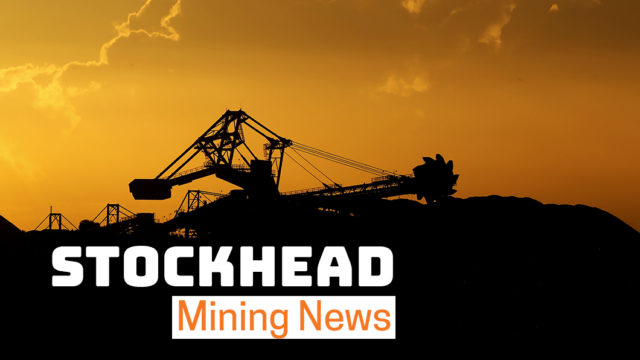The lithium space has not been a particularly enjoyable one in recent times, with an oversupply in 2019 compounded by a fall in demand thanks to the COVID-19 pandemic this year.
Lithium producers have scaled back production in response, with US company Albemarle noting this week that it will recruit fewer staff than previously expected for its lithium hydroxide plant while shelving plans for a third refinery.
This followed news in May that Albemarle would push back start-up of the plant to late 2021 due to the decrease in demand.
But there are signs that the tide might be turning with Galaxy Resources (ASX:GXY) noting this week that while the lithium market remains challenging in the short-term due to an inventory overhang, the medium to long-term outlook remains attractive.
This is due to significant stimulus packages in both the European Union (EU) and China, which are expected to drive an electric vehicle (EV) led lithium demand surge, while automakers remain committed to electrifying their fleets.
Fellow Australian producer Pilbara Minerals (ASX:PLS) also noted earlier this month that the market signalling indicates lithium pricing may be approaching the bottom, with several investment banks and industry analysts forecasting a demand surge and price turnaround in 2021.
Electric vehicle drive boost to lithium demand
Lithium Power International (ASX:LPI) managing director Cristobal Garcia-Huidobro told Stockhead that despite the COVID-19 pandemic, major car manufacturers were choosing to speed up their EV plans – a key driver for lithium demand growth in the short and medium term.
“Demand is growing, that’s for sure. Now, prices will follow probably with a delay as the existing spare capacity and inventory disappears,” he added.
Infinity Lithium (ASX:INF) managing director Ryan Parkin agreed, saying the lithium market is primarily used for consumer electronics, battery storage and increasingly the move to electric mobility.
“Lithium demand at the moment is approximately 300,000 tonnes per annum (tpa) of lithium carbonate equivalent, so it is still a relatively small market,” he told Stockhead.
However, he said with the growing adoption of EVs, Benchmark Minerals Intelligence had projected that demand would grow to 930,000 tpa by 2025 and 2 million tpa by 2030.
Lithium hydroxide to take point as European demand grows
Parkin noted that while the current lithium market was primarily dominated by lithium carbonate, the move towards EVs and the growing use of nickel in lithium-ion battery (LiB) cathodes would increase the use of lithium hydroxide.
“So by 2025, we expect lithium hydroxide to be dominating the market,” he said, adding that Benchmark had projected that 85 per cent of the global lithium supply would be aligned to high nickel content cathodes by 2035.
“As we look at the market now, it is currently dominated by the Chinese. They speak for more than 80 per cent of the lithium hydroxide on the market by 2029 and those Chinese converters are largely driven by utilising spodumene that is derived from Western Australia and shipped to China for conversion.”
Garcia-Huidobro believes that while demand for lithium is likely to increase significantly during the next couple of years, the time taken to develop a project from inception until production means there will be a shortage of both lithium carbonate and lithium hydroxide production in the medium term.
Parkin said the growing adoption of EVs in the EU would require a lot more lithium hydroxide in the market and with people becoming more aware of supply chains, Europe had already made some huge bets in this space.
“Currently, we see a very small market that is absolutely dominated by China. As we move forward to a much larger market, China is still going to be in the first position for lithium battery production and EV production but Europe is going to be second place,” he added.
“They are really focused on that exposure to China and their position in the lithium chemicals market and they are seeking to develop their own fully integrated lithium-ion battery chain.”
European project to meet European demand
Here’s where Infinity Lithium’s vertically integrated San José project in Spain, which will take ore from the second largest hard rock resource in Europe and process it into lithium hydroxide, comes into play.
With its proximity to end markets in Europe, Parkin believes the company’s project is ideally suited to meet the expected demand growth in that region.
“We are very close to end markets, we have an advantage in terms of our carbon footprint, we have a fully integrated facility on site, we are not moving the raw material to another market for conversion, we are doing that all on site,” he added.
The company has worked closely with the European Battery Alliance and was recently awarded $1.5m in funding and ongoing support under the Business Investment Platform.
“The European Commission (EC) has been really focused on developing a strategic value chain to manufacture electric vehicles and lithium-ion batteries,” Parkin explained.
“But they are also very focused on securing raw material such as lithium and the downstream conversion.”
He said that in addition to work on San José, Infinity Lithium was also focused on licensing its intellectual property, which offered a greener process flow sheet than what was currently in use around the world for hard rock resources.
“Our adaptations and our process flowsheet really enable the opportunity to exploit other reserves in Europe and that is a strong focus for the EC,” Parkin concluded.
San José has a current resource of about 1.6 million tonnes of lithium carbonate equivalent, sufficient for a 15,000tpa lithium hydroxide project with a 30-year production life.
The project has low operating costs of about $5,400/t, placing it at the bottom of the cost curve.
Infinity Lithium (ASX:INF) share price chart
The lithium story is not all about Europe
While Europe is rapidly shaping up to be the world’s second largest consumer of lithium, most of the world’s lithium reserves are located in South America in the form of brines rather than hard rock.
And Lithium Power’s Maricunga project in Chile is a notable example of these projects within the ‘Lithium Triangle’ — an area that extends through Chile, Argentina and Bolivia and hosts over half the world’s lithium resources.
The project is already the subject of a definitive feasibility study for 20,000tpa of battery grade lithium carbonate with a 20-year mine life and a CAPEX of $US563m ($764.3m).
Lithium Power has also secured environmental approval for the project and in August 2019 entered into a memorandum of understanding with Chilean state-owned copper miner CODELCO to form a joint venture to evaluate and potentially develop Maricunga.
Due diligence is currently underway with teams from both companies working to finalise the terms of a definitive agreement.
Chilean project well on its way towards production
Evaluation of bids for the engineering, procurement and construction contract from Worley Parsons and Bechtel are currently underway.
“Additionally, we have continued our work on the optimisation of the production process with GEA Messo in Germany, one of the main suppliers for the lithium industry worldwide, with which we produced our first samples of lithium carbonate battery grade in October 2018,” Garcia-Huidobro noted.
“It’s quite interesting the level of efficiency on the overall process that we are reaching, which of course has a positive impact on the cash cost side.”
Lithium Power is also progressing financing of the project with the appointment of Australia’s Treadstone Resource Partners to conduct the process.
“Discussions with different parties on project funding — equity and debt — and off-take agreements have been held during the year, and it has been interesting to see how much interest has been generated among different investors despite the COVID situation,” Garcia-Huidobro said.
Lithium Power International (ASX:LPI) share price chart
You might be interested in












